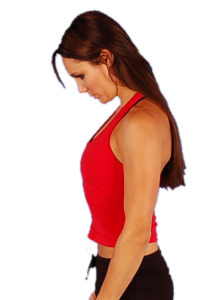The Neck
The neck supports the head and keeps it aligned with the body. It’s at the highest most part of the spine. The spinal column extends from the base of the skull to the pelvis. The neck is created from vertebrae, joints, and muscles. The neck is the start of the spinal column and neck anatomy is a well-engineered structure of bones, nerves, muscles, ligaments and tendons. The cervical spine or (neck) is delicate – One of its primary goals is housing the spinal cord which is responsible for sending messages from the brain to control all aspects of the human body.
Function of the neck:
One primary function of the next is to support the head. The neck additionally contains many blood vessels that enable blood to be transferred to and from the brain. The neck also contains the higher spinal cord, that controls body movements and is connected to the brain stem within the neck.
Benefits of Neck Exercise:
Exercising your neck will build it stronger, and provide a lot of versatility and scale back neck pain that’s caused by stress and fatigue.
Exercising the neck muscles has 3 benefits:
• It strengthens the muscles of the neck, upper back, and shoulders
• It makes the neck a lot more versatile, increasing it’s range of motion
• It relaxes the neck and reduces pain
Forward Neck Flexion
Instructions
• You start facing forwards and with your arms in front of you.
• Make sure you keep the elbow straight and clap your hands together to stop your shoulders from elevating.
• Bring your chin down to meet your chest.
• Hold the stretch for 15 seconds.You can also do this exercise in a sitting position by sitting on a chair, gripping the chair between your legs to keep your shoulders down. The muscles being stretched are the upper fibres of Trapezius, Splenius muscles and Levator Scapulae. This stretch is very good for tight muscles in the upper back and neck.
Tips for Neck Exercise:
• Before you begin a neck exercise program, consult with a healthcare professional, particularly if you have had a recent accident involving your neck or a history of neck problems.
• Stretch slowly, and avoid explosive movement.
• Breathe slowly and deeply as you exercise. Never stretch to the point where it’s no longer comfortable.
• Go to a point when you’re feeling a mild tension, and relax as you hold the stretch. The sensation of tension should go away as you hold the position.
• Do five repetitions for every exercise unless a healthcare professional has requested a distinct variety of repetitions.











